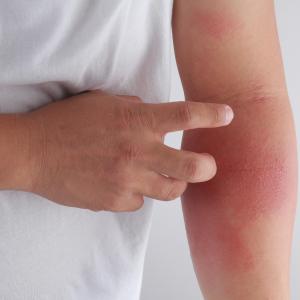The baseline skin cytokine profile of patients with eczematous dermatitis, as determined by RNA in situ hybridization, can help predict response to dupilumab therapy, results of a study have shown.
A team of investigators conducted this study to determine whether cytokine staining or histologic features were associated with clinical response to dupilumab. They retrospectively analysed biopsies from 61 patients with eczematous dermatitis treated with dupilumab (90.2 percent met the Hanifin-Rajka criteria for atopic dermatitis).
The investigators used RNA in situ hybridization to measure markers of type 2 (interleukin [IL]4, IL13), type 1 (interferon gamma), and type 3 (IL17A, IL17F, IL22) inflammation. They also assessed histologic features and compared patterns among complete responders (n=16), partial responders (n=37), and nonresponders (n=8) to dupilumab.
Patients with IL13 expression were more likely to achieve optimal response to dupilumab, while those with less IL13 expression and relatively higher levels of type 1 and type 3 cytokines tended to have poor response to treatment. Moreover, some histologic features were associated with improved response to dupilumab.
“Cytokine RNA in situ hybridization may aid in treatment selection for eczematous disorders,” the investigators said. “Moreover, personalization of treatment selection for inflammatory skin diseases may be possible.”
The study was limited by its retrospective approach and small size of the nonresponder group.
“Dupilumab has revolutionized the treatment of atopic dermatitis,” the investigators said. “However, not all patients respond optimally, and this may relate to underlying molecular heterogeneity.”

